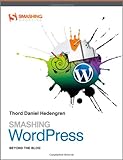Over All Rating Reviews : 
I'm a major bird lover and I have bird feeders set up around my house that have been successful to varying degrees. However, I decided this spring to turn a simple interest in birds to an all out hobby, and turn my simple yard with modest bird feeders into a practical reserve for birds of all sorts. While I'd classify myself as somewhat knowledgeable as to what birds like and need, I'm by no means an expert. So I started out on looking for a book that was simple enough for me to understand, but not so basic I'd be bored. And since money is a big factor, I wanted to find a book that suggested money-friendly ideas that were practical, not overblown ideas that were a major investment. This book fills that niche perfectly.
This book contains activities, projects, and tips that are easy to understand and extremely well written. There are activities in this book that are exceedingly simple (yet unbelievably effective) and other projects that are slightly more complex, but not so daunting that you are in danger of being overwhelmed. In fact, while this book is written for adults, I can't think of an activity in it that isn't something you could do with your children... Some activities I think your children could do quite well by themselves! This book is completely comprehensive, with a really good and equal spread of activities and ideas (meaning you won't pick up this book and find 100 different plans for birdhouses) in areas like bird feeders, houses, feeding stations, bird environments, planting for birds, bird food, water features for birds, to name a few. There are a good, solid number of activities varying from the typical birdhouse or bird feeder, to exotic feeding stations, nesting havens, or bird-friendly garden plans that are not only aesthetically pleasing, but a joy for birds of all sorts. One of the things I like best about this book is that not only do they give the "how to" of a project or activity, but the "why," such as what birds you'll attract, why you'll attract them, why it's appealing to birds, and how you can vary the project to exclude certain pests but include other birdfeeder favorites.
Another part of this book I like is how it talks about specific birds and bird types, behaviors that are typical, when to look for them, how to attract them, and what features, trees, or plants they respond to the most (or likewise, don't respond to at all or flee from). This book also tackles the touchy areas, like how to encourage birds but discourage pest birds and chase off predators, like cats. I also enjoy the illustrations, which are featured throughout the book. Simple and clear, easy to understand, without managing to be diagrams that have no visual appeal to them. And the section at the end of the book, "Resources for Backyard Birders and Gardeners" is unbeatable.
But do the suggestions work?? Well, I'm happy to report that, after implementing a few of the very, very basic tricks and tips, I've seen my feeder traffic increase dramatically. And I've only done the really, really, really basic stuff. I can't wait to see the success that comes with some of the other brilliant ideas offered in this book!!
It should be said this is not a bird identification book, and it assumes that the reader has a basic knowledge of birds and that can identify some of the more common birds, like Chickadees, Titmice, Nuthatches, Sparrows, Blue Jays, Starlings, Grackles, Woodpeckers, Goldfinches... If you have trouble, you might want to pick up a bird identification book to go along with this one... Actually, you might want to have one on hand regardless, so you can identify and track some of the new visitors to the feeder.
Overall, I love this book and I really can't think of any flaws to it. Whenever I read it, I fell like I'm reading the personal journal or diary of an expert bird lover, somebody who not only knows their stuff, but actually gets a lot of pleasure out of what they're writing about, which is completely refreshing. But considering this book is edited by the editors at Yankee Magazine, can I say I'm surprised the book is as good as it is? :)
One tip that isn't mentioned in the book, though I wish it was, is the wonderful resource the Arbor Day Foundation is. They have trees, healthy, good sized, trees and bushes of all varieties, sorted by your plant hardiness zone, all sold at cost. Where else can you buy 50 trees and bushes for under $40? If you plan on using some of the planting and tree tips and tricks in this book, save yourself an unbelievable amount of money and donate to a great cause... Check out the Arbor Day Foundation.


























